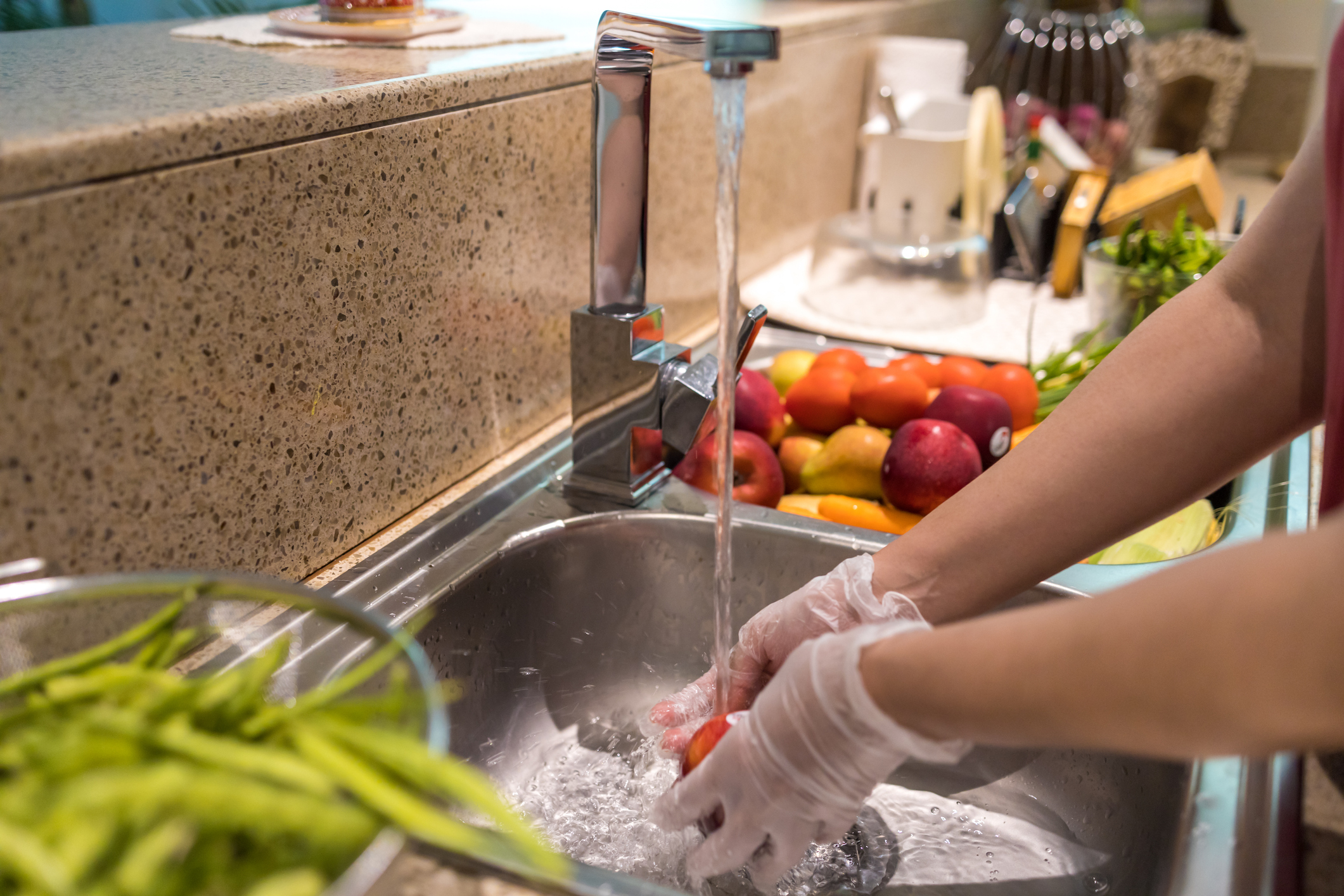Instant ramen has become a popular go-to meal, but improper preparation can lead to burns, excessive...
Read MoreEffective Monday, January 5th, Inspira Health is now at Yellow Alert Status: Masks for staff, patients and visitors in all high-risk areas across our facilities are strongly recommended.


They say you are what you eat, but that isn’t limited to types of food. Ill-prepared foods are prime hosts for bacteria, viruses and parasites. In other words, eating bacteria-infested food means increasing your risk of foodborne illnesses. To avoid the stomach gurgles, here are five things to know about caring for the food that takes care of you.
There are over 250 foodborne diseases, all of which can be traced back to three categories of hazards: biological, chemical or physical.
“Biological hazards are the most common cause of foodborne illness. These are foods contaminated by external forces. For example, someone not washing their hands before handling food. Their germs contaminate the food and, ultimately, the individual eating it,” said Margaret Hymerling, Director of Food and Nutrition at Inspira Health Vineland, Bridgeton, and Elmer.
Chemical hazards include pesticides, food additives and cleaning products. Physical hazards include hair, glass, plastic, metal or any extraneous physical substances.
Anyone who eats contaminated food can contract a foodborne illness, but some people are at an increased risk.
“Eating contaminated foods gives germs direct access to the stomach through the digestive system. That's why we experience diarrhea, vomiting and dehydration when we have foodborne illnesses. The stomach becomes a battleground in an attempt to flush out these invaders,” said Hymerling. “That is also why people with weak immune systems may experience more severe symptoms. Their defenders don't have full strength."
High-risk people include older adults, young children, people with weakened immune systems due to disease and those who are pregnant.
It’s easy to leave groceries or left overs on the counter, but some foods should never sit at room temperature for an extended period of time. If you’re planning to save food before cooking it, freezing it can help slow the growth of bacteria.
“Bacteria cannot survive in freezing temperatures, so freezing foods that you won’t eat or cook right away is a healthy way to preserve them. But the bacteria on the foods you freeze can become active again once it thaws, so it’s just as important to cook food in a timely manner after it’s taken out of the freezer,” said Hymerling.
Bacteria grow at different rates, but foods that have a high water content are prime places for bacteria to grow. That is why you should freeze meats, poultry and fish that you won’t eat in a timely manner. Similarly, be sure to refrigerate perishable foods within two hours of bringing them home—or within one hour if the food has been sitting in a warm environment.
Eating your fruits and veggies is essential to a healthy lifestyle. Just remember to scrub that farm-fresh grub before taking a bite.
“Fruits and vegetables travel a long journey before they reach your counter. From production to retail, your produce interacts with billions of germs and chemicals,” said Hymerling. “To keep your food fresh and free of bacteria and viruses, wash your hands before handling, cut off damaged parts and rinse the produce before you bite into or cut it.”
A vegetable brush or soft cloth can also help remove bacteria or germs.
To prevent foodborne illnesses, the CDC offers a four-step system: Clean your hands, separate raw products from other foods, cook foods to their specified temperature and chill foods promptly.
“Germs are excellent at being everywhere all the time. As you prepare your food, be sure to wash your hands, the meal prep area, the utensils and of course, the produce. Keep your workstation as sanitary as possible to prevent contamination,” said Hymerling.
Cooking and chilling your food correctly is also important for mitigating foodborne illness. Though different foods need different heating and storing methods, be sure to:

Instant ramen has become a popular go-to meal, but improper preparation can lead to burns, excessive...
Read More
Many packaged foods, including Halloween candy, contain added sugars that go by different names...
Read More
Inspira’s Food Farmacy+ program is a resource for patients who face food insecurity, meaning their...
Read More